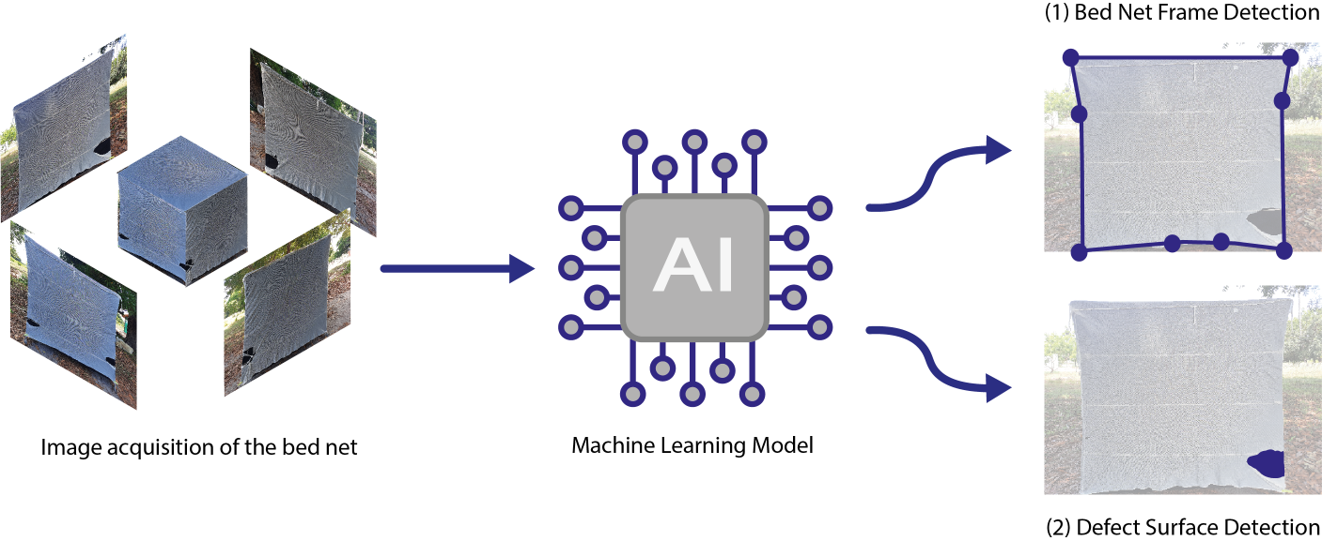Group | New Vector Control Interventions
Our mission is to bring new vector control products to market more rapidly and cost-efficiently through the conduct of rigorous evaluations of their efficacy and effectiveness. We evaluate products using well powered studies, enhanced research standards, and careful data analysis. At the same time, we are dedicated to building capacity in entomology for the future of vector control.
The group specializes in developing methodologies to evaluate new products. The team embraces the challenge of testing new chemistries. In recent years, we have evaluated new types of indoor residual spray (IRS), insecticide treated nets (ITNs) insecticide treated house screening, topical repellents (TR), odour baited traps, volatile pyrethroid spatial repellents (VPSR) and attractive targeted sugar baits (ATSB).
In addition, the study team is well versed in product evaluation methodology and has been involved in the development of several WHO testing guidelines and best practice product testing standard operating procedures (SOPs).
The NVCI group is based at Ifakara Health Institute (IHI) in Tanzania. Product testing data is used by the team of young entomologists as the basis of their MSc and PhD projects.
Key Projects

Visual Analysis of Long Lasting Insecticidal Nets to Maximise Universal Access (ViALLIN MUsAcc)
Long-lasting insecticidal nets (LLINs), or bed nets, are the mainstay of malaria control. However, more than 50% of people living in endemic areas are currently unprotected because LLINs often wear out before their expected lifespan. The aim of this project is to develop a digital tool that will enable national malaria control programmes to improve planning for programmatic LLIN distribution, monitor LLIN quality and select the best product for use in the context. By providing information on mosquito net lifespan, the project aims to optimise resource use, increase child protection and reduce malaria transmission in low- and middle-income countries. Read more
Selected Projects
All ProjectsLatest Publications
All PublicationsChalageri V.H et al. Durability study of Veeralin®, Olyset(®) Plus and MAGNet® insecticide-treated nets (ITNs) in Kurnool district, Andhra Pradesh, India. Parasit Vectors. 2025;18:441. DOI: 10.1186/s13071-025-07016-2
Chen I et al. Volatile pyrethroid spatial repellents for preventing mosquito bites: a systematic review and meta-analysis. EBioMedicine. 2025;119:105891. DOI: 10.1016/j.ebiom.2025.105891
Chen I et al. Corrigendum to 'Volatile pyrethroid spatial repellents for preventing mosquito bites: a systematic review and meta-analysis' EBioMedicine Volatile pyrethroid spatial repellents for preventing mosquito bites: a systematic review and meta-analysis 119 (2025. EBioMedicine. 2025;122:106049. DOI: 10.1016/j.ebiom.2025.106049
Kweyamba P.A et al. Contrasting vector competence of three main East African Anopheles malaria vector mosquitoes for Plasmodium falciparum. Sci Rep. 2025;15:2286. DOI: 10.1038/s41598-025-86409-w
Lissenden N et al. Meta-analysis on the entomological effects of differentially treated ITNs in a multi-site experimental hut study in sub-Saharan Africa. Malar J. 2025;24:34. DOI: 10.1186/s12936-025-05264-2


 Prisca Kweyamba
Prisca Kweyamba
 Emmanuel Mbuba
Emmanuel Mbuba
 Sarah Moore
Sarah Moore
 Olukayode Odufuwa
Olukayode Odufuwa
 Jennifer Stevenson
Jennifer Stevenson
 Johnson Swai
Johnson Swai
 Frank Tenywa
Frank Tenywa